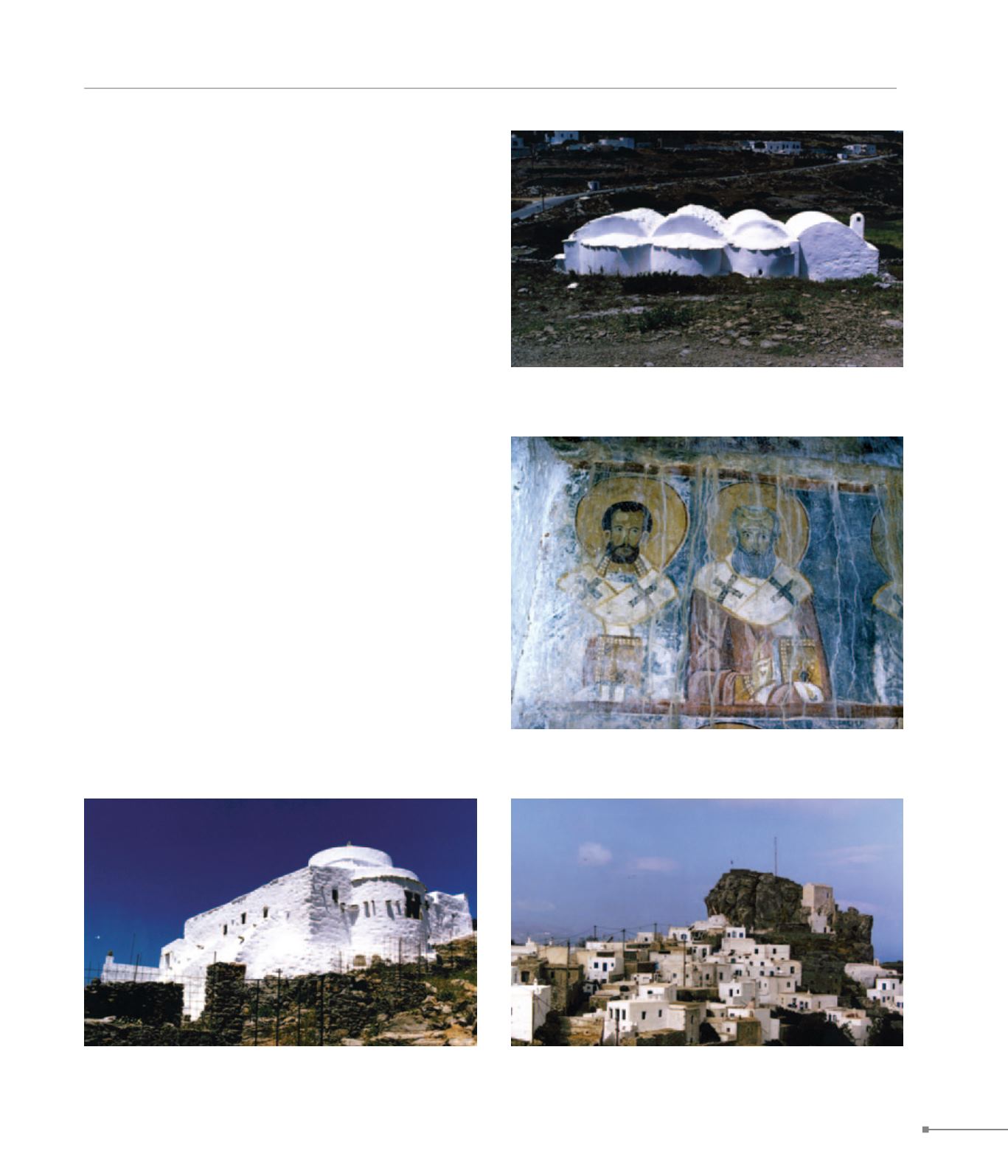
Schoinousa.
Schoinousa.
THE ISLANDS
379
591. Amorgos, Chora, Kastro (Αμοργός, Χώρα, το κάστρο)
592. Amorgos, Kroukelo, Saint John Theologos (Αμοργός, Κρούκελο,
Άγιος Ιωάννης ο Θεολόγος)
591. Amorgos, Kamari, Saint Nicholas, wall painting (Αμοργός, Καμάρι,
Άγιος Νικόλαος, τοιχογραφία)
591. Amorgos, Kamari, Saint Nicholas (Αμοργός, Καμάρι, Άγιος
Νικόλαος)
Information about the troubled period of Arab raids (7th-9th c.)
is provided by the churches established at inaccessible loca-
tions, such as Saint John Theologos on Mount Kroukelo (9) or
sites that were invisible from the sea, such as the Evangelis-
mos church and Aghioi Anargyroi in the area of Katapola (7).
The latter preserves at least two layers of frescoes, the earlier
featuring aniconic decoration.
An important Christian monument is the Panagia Chozovi-
otissa monastery (1), built on a steep rock on the N side of
the island. The monastery has eight storeys but is only a few
metres wide. The year of its foundation remains unknown. To
the period of Latin occupation, 13th and 14th c., are dated
the frescoes in Saint Nicholas at Kamari (3), which had been
converted into a three-aisled church, in the old, barrel-vault-
ed, single-nave church of Saint George Varsamitis (2) and in
Saint John Theologos at Kapsala (8). At the same period the
residential nucleus of Kastro Choras (1) was expanded and
restructured to the S and this was possibly when the internal
paved squares called lozias were constructed. The sparse ar-
chitectural remains from the Venetian occupation include the
Gavras tower, the Tholos (a vaulted passage) and the arched,
barrel-vaulted water cistern known as Kato Lakkos (10).
592
. Schoinousa.
At the Tsingouri site (1), near the sea, are the remains of an
Early Christian basilica and of a medieval village built above
an ancient one. On the S promontory of the island, called
Cape Aghios Vasilios (2), are the foundations of a single-nave
church. Byzantine sculptures are found in the present parish
church.


